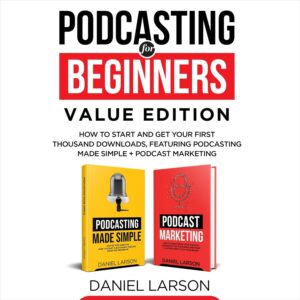Condenser vs. Dynamic Microphone: Which One Is Better for Podcasting? 🎙️
It depends on your recording environment, voice type, and budget. Let’s break it down:
1️⃣ Condenser Microphone 🎤 (Best for Studio-Quality Sound)
✅ Pros:
✔️ Crisp, detailed, and natural sound (captures more vocal nuances).
✔️ Great for controlled studio environments (quiet rooms with sound treatment).
✔️ More sensitive to voice dynamics (captures highs and lows well).
❌ Cons:
❌ Picks up background noise easily (not good in noisy rooms).
❌ Requires +48V Phantom Power (needs an audio interface).
❌ More fragile than dynamic mics.
💡 Best For:
✅ Professional home studios (soundproofed spaces).
✅ Soft-spoken voices or ASMR-style podcasts.
✅ Voice-over and singing.
🎤 Good Condenser Mic Options:
- Audio-Technica AT2020 (~$99)
- RØDE NT1-A-MP (~$199)
- Blue Yeti (USB condenser) (~$109, good budget option)
2️⃣ Dynamic Microphone 🎙️ (Best for Most Podcasters)
✅ Pros:
✔️ Great for untreated/noisy rooms (ignores background noise).
✔️ No need for Phantom Power (works with simple interfaces).
✔️ Durable & reliable (can take a beating).
✔️ More natural-sounding for spoken word.
❌ Cons:
❌ Less detailed than condensers (but still perfect for podcasts).
❌ Requires closer mic technique (speak within 3-6 inches for the best sound).
💡 Best For:
✅ Home podcasters without soundproofing.
✅ Louder speakers or energetic hosts.
✅ Streaming, gaming, and live recording.
🎤 Good Dynamic Mic Options:
- Audio-Technica ATR2100x-USB (~$48, best budget choice).*
- Shure SM58 (~$99, industry-standard).
- Shure MV7 (~$249, hybrid USB/XLR).
- Shure SM7B (~$399, pro-level).
🏆 Verdict: Which One Should You Get?
- For home podcasting (not soundproofed): Dynamic mic (less background noise).
- For a quiet studio setup: Condenser mic (richer sound).
- On a budget & need USB? ATR2100x-USB (dynamic) or Blue Yeti (condenser).
- Want the best podcast mic? Shure SM7B (dynamic).
🚀 My Recommendation for Your Budget:
💰 Best beginner option: Audio-Technica ATR2100x-USB (Dynamic, ~$99) → USB for plug-and-play, XLR for upgrades later.
Before you begin, learn from the professionals how to start podcasting.

